Close
The Japanese company Nikon began operations in 1917 and specialized in the manufacture of optical instruments and devices for electronic image processing. The first Nikon brand camera appeared in 1946. In 2010, Nikon ranked 2nd after the Canon brand in terms of sales of digital cameras. Today it is a world market leader that produces high-quality photographic equipment. The stores of many countries, including Russia, present the entire range of Nikon products, which have earned high consumer confidence.
How to choose the best model of the camera brand Nikon?
Camera models are distinguished primarily by the type of camera. If you want to buy a Nikon camera for home photography, then choose a digital compact or digital ultrazoom — these are cameras without mirrors with a small matrix (no optics change is provided). In contrast to the compact, the ultrazoom is larger and can enlarge the image over 40x.
For professional shooting, the possibility of changing the lens is very important, so pay attention to the equipment with the type of camera - mirrorless and mirror. The feature of these cameras is the presence of a large matrix and the possibility of changing the lens for shooting different degrees of complexity. The difference between a Nikon mirror camera and a mirrorless camera is that the image is projected from the lens onto the eyepiece using a mirror, thanks to which the user sees the image exactly as it appears in the photo.
Nikon cameras differ in series: A, P, DL - functional compacts; AW - dust and waterproof; D - mirror; L, B - budget; Nikon 1 - mirrorless and S - compacts. Each Nikon camera manufacturer has provided various functions and features: touch and / or swivel screen, built-in flash, flash connection, image stabilization (prevents image blur when shooting without a tripod), continuous shooting (several frames in a row), manual shooting mode (the ability to manually adjust exposure parameters), sensory focusing (the photographer himself determines the point of focus using the touch screen).
Article author Ross Harvey (Ross Harvey) - wedding photographer, winner of an international award
What is not in this review: pixels are not considered here, and there are no statistical comparisons with various cameras.
What is the main point of this review: This is a real opinion expressed in a professional environment from an amateur instrument with high standards. This review can not be called comprehensive, it is specially designed according to my needs and style of photography.
Important notes: 1) All the cameras mentioned in this review were purchased by me personally and used in the work, this review is impartial. 2) I used and compared hardware from many other brands. All of them did not satisfy my professional requirements. 3) Each photograph (with the exception of the dance floor) was created with natural light. The flash was not used under any circumstances.
Nikon D750 vs. Nikon D3S
I have used two Nikon D3s cameras over the past few years. I adore this camera and very often praised it as an excellent choice for wedding photography. Perhaps this camera is the embodiment of the best number of megapixels, with regard to print characteristics of photos and storage online, perfect autofocus, low cost and excellent high ISO (in the context of dynamic range) for a serious professional shooter camera.
Despite the fact that weddings are not as high-speed events as sports competitions, I move quickly and quickly photograph. If you think this is a weak technique, consider the following: I do not want to work with a camera that does not have time for me. I want to work with a camera that can be called understandable; an inseparable element of my thought and workflow. The D3s camera served faithfully, even in cases where many other cameras failed.
Upgrade option D3S
With each update of the camera and approaching the 300K shutter mark, it’s time to look for a replacement. The logical choice is the D4s camera. This camera has incredible features, but do I need a huge buffer? Not really.
Cameras models D610 and DF are also good, although they are equipped with a less powerful autofocus system. For some, these cameras are flawless, but I’m a man spoiled and used to using the very best and what he has to offer.
The D810 has an 51-point autofocus system, but at 36 megapixels and 5fps, it has no speed. However, this camera can be considered a discovery for photographers working in the studio, landscape photographers and portrait painters.
Getting to review the camera Nikon D750. Let's start with the updated (I think) matrix of the D610 camera, which is able to work in low light conditions and even surpasses in this the D810 camera. The latest is the best Nikon 51 autofocus system that can focus at -3EV. Slots for two cards of the same format (SD). 6.5 fps, less by only 2.5 than the D3s. 24 pixels is a mega difference.
Nikon 35mm f / 1.8G (FX) Lens Review
In order not to facilitate the work of the D750, I installed a new Nikon 35 / 1.8 lens on it. This lens is smaller, cheaper in price and is a lightweight version of its older brother - the lens is my “workhorse” I have worked with for the past 4 years - Nikon 35mm 1.4G. Perfect for use with the D750.
Two D750 cameras and a 35/1. 8 lens fell into my hands on the eve of my departure for the wedding photography. By the way. I took with me one D750 camera and a new 35mm lens, and in parallel I used the D3s camera, and most importantly, I used the D750 camera just as if it were a D3s camera; fast and uncompromising.
If this camera was able to cope with such a pace, then this camera could become a special camera at a reasonable price and with such a size.
Nikon D750 Autofocus
Autofocus, along with the technology of the matrix is the basis of the functionality of a professional camera. I most often photograph with a maximum open aperture of ƒ1.4, so manual focusing is not fast enough in this case. Without using autofocus, you miss the right moment. A camera that can capture focus enhances your self-esteem. Self-esteem and creativity are closely linked.
In manual mode, I select the autofocus point, and then use the tracking focus function (AF-C). I do not need my camera to determine the focal point. This work is performed by my composition and my eye. All the camera has to do is fix the subject I'm focusing on.
As a result, I should be happy to announce that the D750 is equipped with an excellent autofocus system; my creative freedom in my movements remained unobstructed. Both central and extreme autofocus points performed their function amazingly. When I started working with a camera, I expected to see pictures with lost focus, but almost every time the D750 surprised me with absolutely precise focusing, which exceeded all my expectations, and I had very high hopes.
A photograph of the ceremony - the passage to the altar was made in conditions of very poor lighting. In this case, the camera D750 did not have problems with fixing the focus at the extreme point. The ability to take such photographs, while not relying on the center point, is a huge plus for compositional possibilities.
The two photos below were taken quickly. Both photos turned out the first time. The woman who dropped the drinks was not thrilled with me because I took a picture of her, but this photograph was a wonderful test. I did not even have to look through the viewfinder, the focal point was already selected, and the subject was captured in the frame.
Until the D750 came out, one of the problems I was concerned about was the buffer. I read reports that the D610 is not suitable for quick work. Replacing the D3s (for sports photography) with the D610 was a potential blunder.
I am extremely pleased to state that the buffer in the D750 is extremely roomy. For confetti photography, I could take 2-4 serial shots every second without any problems. When filling the buffer, a decrease in the speed of work is noted. In total, I took 30 photographs. 24 photographs were taken with accurate autofocus, the first 3 photographs turned out to be unfocused (probably this was only my fault), and the last 3 photographs turned out to be only slightly inaccurate, but they can be easily corrected with minimal sharpening. Impressively, I used the excellent 24mm 1.4G Nikon lens.
Buffer / write speed update: Since then, I tested the SanDisk Extreme Pro 95MB / s SD card and it turned out to be even better. Even with full buffer, the D750 takes pictures at a speed of about 4FPS, and the buffer is cleared much faster. I highly recommend using this card. The 3D follow focus function works exceptionally well, especially in the case of photographing objects that move in the frame
(for example, children running in the field), although I still prefer manual focusing, you can play with it more in the winter.
D750 Camera Settings
I set the settings for the D750 camera the same as in the D3s camera. Readers of this article, if you want, you can try to use my settings (if any setting is not mentioned, it means it is set by default):
Aperture Priority
Matrix metering
AF-C, 9 points
Auto ISO: Base 100, Max 12800, Minimum shutter speed 1/250
Playback menu
Playback display options: Checkmark [Brightness, Histogram, Overview]. Additional viewing screens (The up / down key is in cyclical mode).
Image Viewer: Off
Photo menu
File name: rhp. Of course
Slot 2: Reservations (both in RAW format). If I need to reserve something, then the reserve should be in RAW format.
Image quality: RAW. Naturally.
RAW Record: Lossless Compression, 12 bits. Less space is used, so more pictures are saved on the map, without losing important details.
Color space: Adobe. I use Lightroom and Photoshop.
Custom Settings
A3 - Focus tracking: 1 (sometimes OFF). I prefer autofocus to focus on being directly in the autofocus point.
a5 - Autofocus Illumination: ON. When you press the autofocus point, it flashes red.
a6 - Focusing in a circle. (AF Point Wrap): ON. This setting should always be the default. Note: The point is that when choosing a point
AF using the arrow buttons after reaching the extreme right point pointer "jumps" to the leftmost in the same row, and does not stop at that extreme point.
a9 - Auto-focus lamp: OFF By itself.
b3 - Easy exposure compensation: Reset (ON). I discovered a shortage of the ExpComp button (which I used in the D3s camera).
b4 - Matrix Face Recognition: OFF. However, I will turn it on during my next wedding photography for further testing.
d7 - Viewfinder Grid: ON. Horizontal lines are used for straightforward compositions.
f1 - OK button - Playback: Zoom 100%. This is important to check the focus.
f3 - Preview: My Menu (My Menu)
f5 - Switch - Menus & Playback: ON
f7 - Free slot: Lock. Does not allow using the camera without a card.
The AF point spreading function does not completely cover the entire frame, as in the D3s camera, but I do not consider this a problem. Any extreme compositions can be done by locking the focus (the AE / AF-L button), and besides, I always make a slight rearrangement of the composition. It occurred to me that if I overlay the resolution of the 12MP D3s camera through the D750's viewfinder, the AF points on the D750 will largely cover an imaginary frame of the D3s camera. In ‘worst case (in other words, the need for autofocusing on the subject of photography in the corner of the frame), I can use the extreme point and then crop the image and still the resolution will be higher compared to the D3s camera.
I use extreme autofocus points all day, Their functionality plays a very important role in the style of my photography. All these photographs were successfully taken using extreme focal points.
Autofocus camera D750 in low light conditions
In short - autofocus in low light conditions is the next level. In fact, I conducted many tests in a dark room with a focus on objects, in conditions where any other camera would stop working. Each time, the D750 exceeded my expectations.
Performance of the D750 in low light conditions
Being a pampered D3s camera, which has an excellent dynamic range at high ISO, I had high hopes, although in fairness I must say that I did not expect a miracle. But it was a miracle I found. Even using a cheaper lens - Nikon 35mm 1.8G - everything turned out just fine.
The photo below is taken with the maximum open aperture (ƒ1.8) and ISO 9000. All I did was reduce the saturation of the blue channel to remove the blue tint from the window.
Sumptuously! The dark church began to look like a bright room. Note the quality of the dynamic range even at ISO 9000. 100% cropping demonstrates noise quality; sumptuously.
Lack of chromatic noise, spots, strips. Uniformity and consistency. Quality. And this can be achieved only through the camera without any noise reduction or the use of any additional software.
The D750 had no problems finding contrast in the test environment. The photographs presented below were taken in more darkened conditions than can be expected as a result - since the power of the best matrix is combined with the best autofocus:
What about shooting on the dancefloor, where everything happens so rapidly? Very often, I used a D3s camera in combination with a Nikon 24-70 mm 2.8G lens, using an autofocus backlight lamp on the SB-910 flash.
Again, the D750 with its small 35 / 1.8G lens worked great. I think I managed not to miss a single photo for the whole evening.
RAW Manipulation
The level at which a RAW image can be edited has a strong effect on post-processing capabilities. Higher dynamic range in the image. That is why a higher dynamic range at a higher ISO plays such an important role, you adjust the ability to manipulate the image according to your preferences.
Below are a few examples that demonstrate how to edit D750 files to a normal level.
Pay attention to the quality and depth of detail, contrast and color images. Adobe Lightroom software was used for editing.
You can now have the latest version of the Adobe Camera RAW and DNG converter. Official support for Nikon D750 camera is now underway!
Below is a 100% scaling of the shaded area, and again pay attention to the high quality of color and noise. Maximum open aperture, ƒ1.8 on a 35mm / 1.8 lens.
Extreme Matrix Testing: 5-stop underexposure
Although this is not an example of life (if you do not have serious problems with exposure!), Below is a photo with 5-stop underexposure at ISO 100. All the same equipment and installations were used: a Nikon 35 / 1.8G lens using 12-bit lossless compressed RAW recording.
The above image was imported into the Lightroom editor with an improved exposure of +5 stops, the result is displayed below. This is mind boggling restoration of detail! The depth of detail in the dark areas seems to defy any logic, because they are actually black in the original image. Awesome.
At the request of some photographers, below is a photo taken by a Canon 5D3 camera with exactly the same settings (Canon 50mm 1.2L lens), editing was done with the same settings (although it was necessary to reduce the saturation of the red and purple channels by about 80%). the black areas on the photo were actually purple.
On the photographs taken by the 5D3 camera, the presence of stripes, a chromatic noise similar to a woolen cloth is noted. Chromatic noise is very undesirable, since it is very difficult or even impossible to get rid of. Even in black and white photographs, it appears blotchy. The reason for the pale colors is a lower dynamic range. I could not get the white areas to become more white, I had to do it, so the rest of the photo looks unnatural. In addition, in the dark areas there is a loss of detail.
For quick comparison, below I posted the photos taken by the D750. I repeat, this is not an example of life, it is just a testing matrix. The Canon 5D3 camera is very good and has served many professionals with dignity. Past testing has demonstrated how good the D750 camera matrix is.
12800 ISO Comparison with D3S
In each repeated photograph, the top one is made with the D750 camera, the bottom one with the D3s camera. The picture was taken in a dark room with a strong backlight (this is my office, or “den,” as my wife calls it). The gap between photos is 2 seconds. In both cases, a Nikon 35 / 1.4G lens was used. ISO 128000, ƒ2.8, 1/125. Noise reduction was not applied.
And in order to add some poignancy, I took only one photograph, using the lowest center focal point, and the Leica M3 being the target was the object of photography. It is interesting to note that the focus of the D750 was very accurate, and in the case of the D3s, frontal focus was noted. Remember, the top photo is the D750, the bottom photo - D3s camera.
Great job from the D750! It keeps at the level of the undisputed king of work in low light conditions - DXOMark DSLR cameras! Great contrast. The D3s camera surpasses the blue channel brightness, and the D750 captures them perfectly. As for the dynamic range, both cameras are extremely efficient. For a camera, a situation where you have to work in low light conditions in the presence of a backlight.
In general, I can say that the effect of stunning proximity is created. Remember that 100% pixel accuracy is not at all a remarkable feature in everyday use: in print blogs. Therefore, I am almost certain that it will be difficult to determine where, which camera was tested.
Conclusion
I found for myself a new wedding camera. The 1.4G and 24-70 lenses surpassed all my hopes and expectations and at the next wedding I will return to the use of these lenses for shooting on the dance floor. And also I will use two D750s cameras. My two loyal D3s ’cameras will also accompany me as a reserve (I never thought I'd say this to myself). Creating such a small camera with such a wonderful matrix and autofocus system that is not only capable of providing excellent dynamic range and quality at high ISO, but also able to focus in dark conditions will be absolutely invaluable for countless photographers. I admire the abilities of this little camera.
I travel a lot for the sake of photography, so I always enjoy using light and small equipment.
When you carry two cameras with you all day, these ergonomic advantages cannot be underestimated.
Battery and storage device on the card; with a RAW recording installed on a card with 12-bit lossless 64GB compression, (Lexar x600, 90MB / Sec), the reader showed 1.5K shots. In fact, I made 2.3K shots, while the photo count continued to show that there was still room for 200 frames. So you only need four 64GB cards to capture 5,000 photos per wedding with a 1: 1 RAW reserve. I used two batteries to capture those same 2.3K photos, while only one-fifth of the battery was used. At the same time, on the eve of the wedding evening, I still “played” with the camera menu and WiFi. Very impressive. Two batteries for one camera with an excess of enough to hold one long wedding.
User mode profiles (U1 and U2 on the limb) are simply flawless. The D3s is equipped with custom “photography banks” (ie, profiles) to switch between aperture priority and manual shooting mode (I used for shooting on the dance floor and with the flash off). They can be selected via the camera menu. I prefer the use of user profiles on the D750 using the dial, everything is much faster. In order to save the settings of U1 or U2, it is necessary to select the desired mode on the main switch (M, A, S, etc.) and set the camera properly. And then just need to press the "Menu" button, go to the "Setup Menu" and select "Save user settings".
Then you choose U1 or U2. Note: even the selected autofocus point is saved! Remember that in order to save custom modes, you must reset to the center point.
As for the maximum shutter speed of -1/4000, I do not even take it into account, since the D3s camera had ISO 200 and a shutter speed of 1/8000 (which is identical to the base ISO 100 of the D750). In direct hard sunlight, the lowest aperture you can achieve is 2.8, but in sunlight I usually work in documentary photography mode. If you need to achieve ƒ1.4 to create portraits in direct sunlight, in this case you can always use a gradient neutral filter (ND) on the lens.
Supporters of the Nikon D700. This is your next camera. Your prayers are heard (I switched from the D700, and I must say this is a fantastic camera). Low light performance and AF magnification are unique in their own way.
Canon Photographers. If you were waiting for the right moment, I know many of you, and so, this moment has come. I own and photograph a 5D3 camera. This D750 camera has a stunning performance and accuracy that has no competitors. The 5D4 camera has its own performance. Adorable times have come for Nikon and Canon camera users, as their competition spurs technological change.
D3 and D3s camera users. If you need a larger buffer and FPS for full-scale sports and action shots, I can wholeheartedly recommend using this upgrade option.
Good performance
Small size compared to the D3s camera
Very lightweight camera compared to the D3s camera
Excellent ergonomics for my hands and battery pack.
Amazing autofocus in any light
Striking dynamic range
High ISO, like the D3s!
Wide range of exposure compensation: +/- 5
Good balance with 24, 35 and 85 1.4G fixed focal lenses
Quick photography, great buffer when working with the right map
Inclined screen is very useful
Fast sight on the screen
SD cards are cheap, like chips
Excellent user profile profiles
Presence of special settings
Built-in WiFi (it's so convenient)
2.5K still pictures on a 64GB card
Good battery life (same as D3s camera)
Didn't I say this is an amazing camera?
Characteristics that could be better
Sighting on the screen (Live View): Double exposure does not work (much easier to do with the overlay, Nikon, please make corrections!)
Sighting on the screen (Live View): Preview of the exposure should be set by default (shows the exposure in real time)
Live View: Hold down the + D-Pad button to control / move a larger focal length.
An option is needed to disable the activation of the LCD when the ISO changes
Quiet mode. He is not at all silent!
AF scattering points
Shutter speed1 / 4000
Final Word
Nikon, you have truly created a monster. This camera can be called a real treasure.
Samples of photos taken with a Nikon camera D 750
Article prepared on the materials: petapixel com
In one of the first articles on this site, I expressed my opinion about what type of camera a newbie should buy: a soap dish, a mirror or a mirror. And among the different factors influencing your decision, I tried to answer the question: “What is better to get: a cheap camera and an expensive lens or an expensive carcass and a cheap lens if you have a limited budget?”
In my opinion, if you want to save money and, nevertheless, take a good machine, it is better to invest in the purchase of a cheaper carcass and expensive glass. After all, a camera, even an entry level, like the Nikon D5100, can produce images of amazing quality if it is equipped with good optics!
A small retreat (April 24, 2014)
Guys, it so happened that this page is often visited by photographers who want to see photos taken not only on the Nikkor 70-300 telephoto, but also with other lenses. For you, I decided to make a list of several posts where you can see such examples.
|
By the way, if you are just eyeing the purchase of your first SLR, then keep in mind that "KIT" in English means a kit, i.e. there is a separate camera (carcass) Nikon D5100 and one of the lenses goes to it. The most common is the Nikon AF-S DX NIKKOR 18-55mm f / 3.5-5.6G VR. In various online stores letters in the designation may differ. But this is simply because merchants are lazy to bring all the letters into the computer. In fact, we are talking about the same lens. If you want to see what pictures you can take on the Nikon D5100 KIT 18-55, read my reports on independent travel to China in 2011, to Mexico and to Sri Lanka. |
|
Unfortunately, for a long time I was not able to take pictures of them under normal lighting. If you subscribe to my blog updates (see the subscription form next to the comment block at the bottom of the review), then do not miss the moment when I will start to publish a report about the repetition and where most of the photos were taken on Nikon D5100 + Nikon 17-55mm f / 2.8 . In the same place there will be a lot of videos shot on Nikon D5100 and Nikon 17-55mm f / 2.8, and, a little bit, on the shyrik Samyang 14mm f / 2.8 and the telephoto Nikon 70-300. In the same story, you will see how the Hoya PL-CIR PRO1 Digital 77 mm polarizing filter acts on an image. |
We continue the review ...
Among my friends and fellow photo enthusiasts there is a girl - the owner of the younger model Nikon D3100. She recently acquired a 50-mm 50mm f / 1.8G AF-S Nikkor and a top lens for a 17-55mm f / 2.8G ED-IF AF-S DX Zoom-Nikkor crop lens. Since then, I can describe most of her photos in one word: “amazing”! It is clear that to get a good photo you need to take into account many factors (light, composition, etc.), but even when it has misses it is very difficult to criticize, because technically the picture is very good!
And even before buying my friend's 50mm f / 1.8G AF-S Nikkor lens for the Nikon D3100, I had the opportunity to see what my D5100 is capable of if I can give a good lens as a pair. I bought my camera one day with a friend who also took a Nikon D5100 with a KIT lens 18-55 / 3.5-5.6. At first I was absolutely delighted with the quality of my shots, but after a couple of months, Michael, a friend of mine, bought SIGMA AF 18-250 mm F3.5-6.3 DC Macro OS HSM for Nikon travel zoom. Frankly, I could not believe that my Nikon D5100 can give such a picture quality! ..



However, six months later, Mikhail decided that the Sigma 18-250 / 3.5-6.3 lens was not impressive in terms of picture quality and exchanged it for a top zoom for Nikkor 17-55 / 2.8 cropped cameras. Unfortunately, today I can not show you the examples of photos taken on the Nikon D5100 with this lens, but take my word for it - this glass is deservedly considered the best option as a crooner!
Since two like-minded amateur photographers have put Nikkor 50 / 1.8 G and Nikkor 17-55 / 2.8 on their cameras (well, Sigma 18-250, although it was dark), the shots taken on my KIT 18-55, I began to seem dull and not expressive. And I had a dream: put something more serious on my sprinkled Nikon D5100 carcass.
What to take to the Nikon D5100 crop as a staff member?
Hundreds of new amateur photographers ask themselves this question and cannot find an unequivocal answer ... I also cannot ... After reading hundreds of pages of lens discussions on various photographic forums, I compiled a list of lenses that could be used as a regular on my Nikon D5100:
- Nikkor 17-55 / 2.8 - for shooting on holidays, for every day;
- Nikkor 16-85 / 3.5-5.6 - for shooting while traveling;
- Sigma 17-50 / 2.8 - for shooting on independent travels and for every day;
- Tokina AT-X 124 PRO DX II Nikon F - for shooting landscapes on a cropped camera;
In this list, in terms of price / quality ratio, according to the majority of amateur photographers, the Nikkor 16-85 / 3.5-5.6 lens is in the lead. He draws a good picture, sharp and has a convenient range of focal lengths. Of the minuses - darkish. It was Nikkor 16-85 / 3.5-5.6 that I wanted to buy before going to Sri Lanka on my own to photograph animals on a safari in Yala Park. But not destiny: I arrived at the store the day before the start of the journey, but they sold it ...
The second option is Sigma 17-50 / 2.8. Very good glass, but according to reviews, front or back focus is often encountered. You need to carefully choose your copy when you buy. I suspect that these negative reviews should not be particularly trusted. After all, on any forum you will find 10 negative reviews on the force, but with sales of hundreds of thousands of units - having ten defective lenses - funny statistics! .. But, anyway, I did not buy it ... 🙂
Once I tried to calculate the statistics of what focal lengths I most often use on independent travels during vacations. A study of two hundred photos from our trip in a rented car in Mexico showed that approximately 60% of all shots were taken on a focal 18mm, a little 32 mm and 48 mm, almost nothing 24 mm and a little 55 mm.
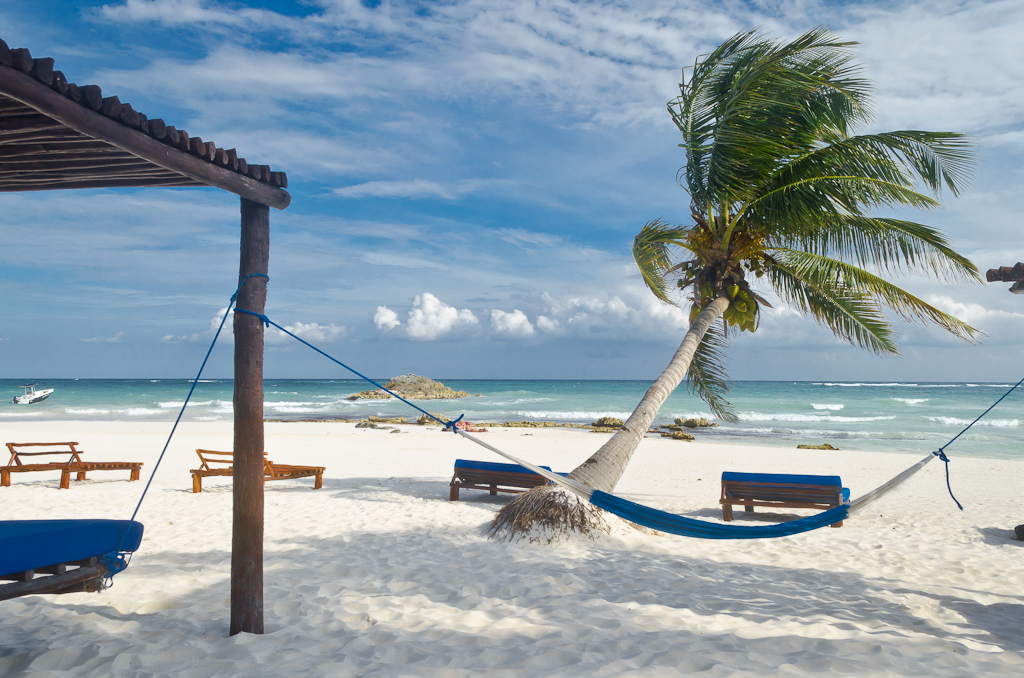
Nikon D5100. Lens:AF— S Dx VR Zoom— Nikkor 18-55 mm f/3.5-5.6 G. Exposure time: 1/500 sec. Aperture: f / 9. Focal length: 18 mm. ISO: 100. Exposure compensation: 0 eV. Shooting mode: aperture priority. Flash: did not work. Time taken: November 30, 2012, 02:03
Thus, it is clear that most of the time on vacation I photograph at wide-angle focal lengths and I, in theory, need a Tokin AT-X 124 PRO DX II Nikon F, which is considered the best landscape lens for close-up cameras.
Another option - Nikkor 17-55 / 2.8. Of course, this optics is just a dream, just the best reportage for crop (and on vacation, very often the main genre of photography is reporting). Cons Nikkor 17-55 / 2.8 - its price ... And, although I dream that as a full-time lens on my Nikon D5100 there was a magnificent 17-55 / 2.8, I haven’t bought it yet. And that's why…
Once in a store, I was flipping through some kind of digital photography guide book. I don’t remember the name of the author, as she didn’t impress me much. I was struck by a thought that the author of the guide set out in the preface: “If a novice photographer wants him to have extraordinary photos, then even before starting to learn the basics of photo art (composition, setting light, transferring dynamics and volume in a photo, etc.) .d.) he should think about buying a lens with non-standard focal lengths. " Think about it: hundreds of thousands of amateur photographers around the world buy themselves an entry-level amateur SLR camera (be it the Nikon D5100 or Canon 600D) with a standard lens with standard focal lengths of 18-55 mm and take hundreds of millions of photos on these standard focal lengths every day.
If you get yourself a wide-angle (the same Tokina AT-X 124 Pro DX II) or long-focus telephoto lens (for example, 55-300), then you will already select your photos from the common shaft of ordinary photos. Recently, I was flipping through an electronic journal in which independent photo travelers traveled photo reports from their tours in different countries of the world. Do you know what thought I caught myself looking at their photos? .. I like more, the photos that were taken at focal lengths less than 18 mm and more than 55 mm more strongly catch the strings of the soul. That is, apparently, for 2 years of filming with your Nikon D5100 with a Nikkor 18-55mm f / 3.5-5.6G AF-S VR DX Zoom lens, this focal length range has become “boring” for me.
As a result (I will not go into the details of the search and acquisition process), I became the proud owner of a used Nikkor AF-S VR 70-300 mm f / 4.5-5.6G IF-ED lens. And now I will try to prove on my fingers in the pictures the postulates listed earlier in my article:
- Photos taken on a lens with a non-standard focal length look more original than those photographed at KIT 18-55;
- The Nikon D5100 carcass, equipped with a lens of a higher grade than the standard Nikkor 18-55mm, shows simply excellent results;
- To meet their needs for high-quality photos in different genres and conditions, a novice amateur photographer, sooner or later, will come to the decision that the fleet of glasses should include several zooms and a number of fixes.
Examples of photos taken on Nikon D5100 paired with Nikkor AF-S VR 70-300 mm f / 4.5-5.6G IF-ED
One of the reasons that prompted me to open this website for a beginner amateur photographer and traveler was the inability to find practical recommendations for shooting still lifes in natural light. I must say that when I tried to find examples of photos taken on the Nikkor AF-S VR 70-300 mm f / 4.5-5.6G IF-ED installed on my Nikon D5100 DSLR, this is also not a very simple task. . And now I will try to facilitate your decision: you will see examples of photos taken on one of the best budget telephones for Nikon - Nikkor AF-S VR 70-300 mm.
On numerous forums, when discussing the tests of this lens, a pleasant picture, excellent sharpness in the range of focal lengths of 70-250 mm, and good stabilizer performance are recorded in it (all photos are further taken from hands, often in dim light). The disadvantages are that it is a “vacuum cleaner”, like many telephones, a lot of weight and weak aperture (although for such a price a weak aperture is not a disadvantage, but a compromise). To get good results when shooting with a Nikkor AF-S VR 70-300 mm telephoto lens, you will have to get used to using high ISO values. Many of the photos in this review were taken with ISO 800-1000 units. Before buying a Nikkor AF-S VR of 70-300 mm, I used the ISO 100-400 units on my D5100, and I tried to avoid such high values as when using a telephoto. I was afraid of noise (looking at the pictures below, I would say that the matrix from Nikon D7000 (note from November 5, 2013: corrected the camera model, following the comments on the article below ) installed on our Nikon D5100, indeed, behaves well at high ISOs, and I am quite satisfied with the photo at such sensitivity values).
First impressions of the lens Nikkor AF-S VR 70-300 mm f / 4.5-5.6G IF-ED
I mentioned above that I purchased my Nikkor AF-S VR 70-300 mm in the secondary market. When I asked the seller why he sells the lens so cheaply, the answer was that there was a lot of dust inside (I don’t see the dust visually and, as you will see below, its effect doesn’t appear in the pictures either), as any used TV will have. We met the seller, I screwed the Nikkor AF-S VR 70-300 to my Nikon D5100 carcass and took a few test frames at different focal lengths from 70 to 300 mm at different apertures. After finishing the lens test, I drove home to see the Nikkor AF-S VR 70-300 test results on my computer. And when I saw on the monitor screen photos taken by this telephoto, I just gasped !!! This is just a new level! What a bokeh! What a sharpness! No comparison with my Nikkor KIT 18-55! ..
That same evening, as I became the proud owner of Nikkor AF-S VR 70-300 mm f / 4.5-5.6G IF-ED, I gathered things in a backpack - and in the woods, to test my new television on a photo hunt ...
The first disappointment: I wandered through the forest, through the swamp for a couple of hours, but I could not remove a single bird, not a single animal, because they do not allow themselves to come near ... 🙂 Here is a lesson for you: forest birds must be removed from cover! 🙂
The second disappointment: this Nikkoor AF-S VR 70-300 telephoto lens doesn’t fit into the frame on a crocus !!! On the first evening I could hardly take a few shots:
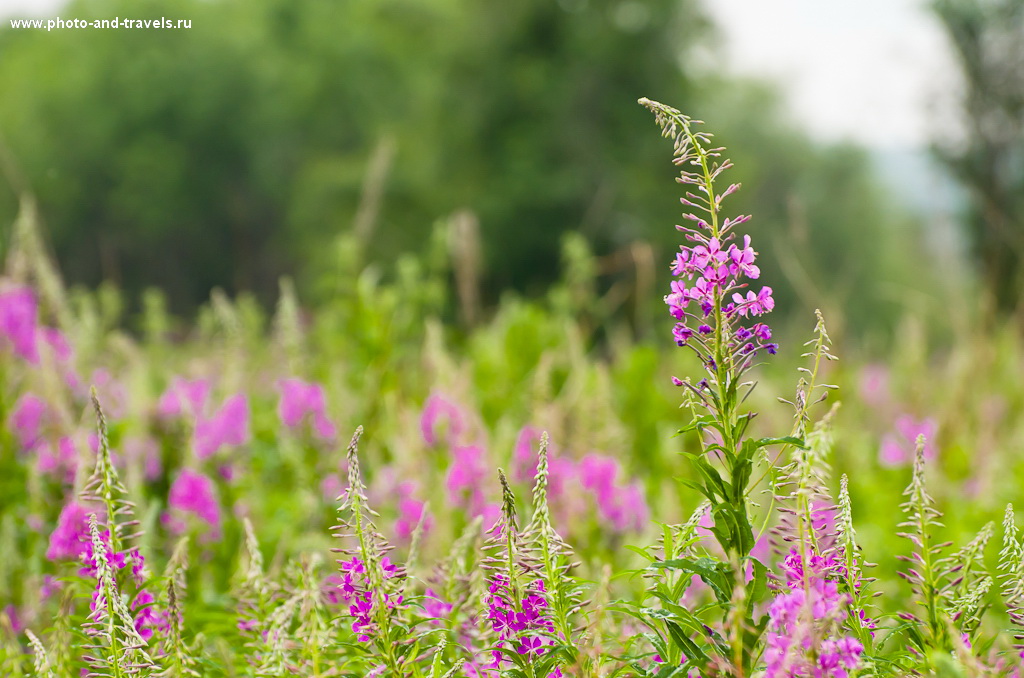
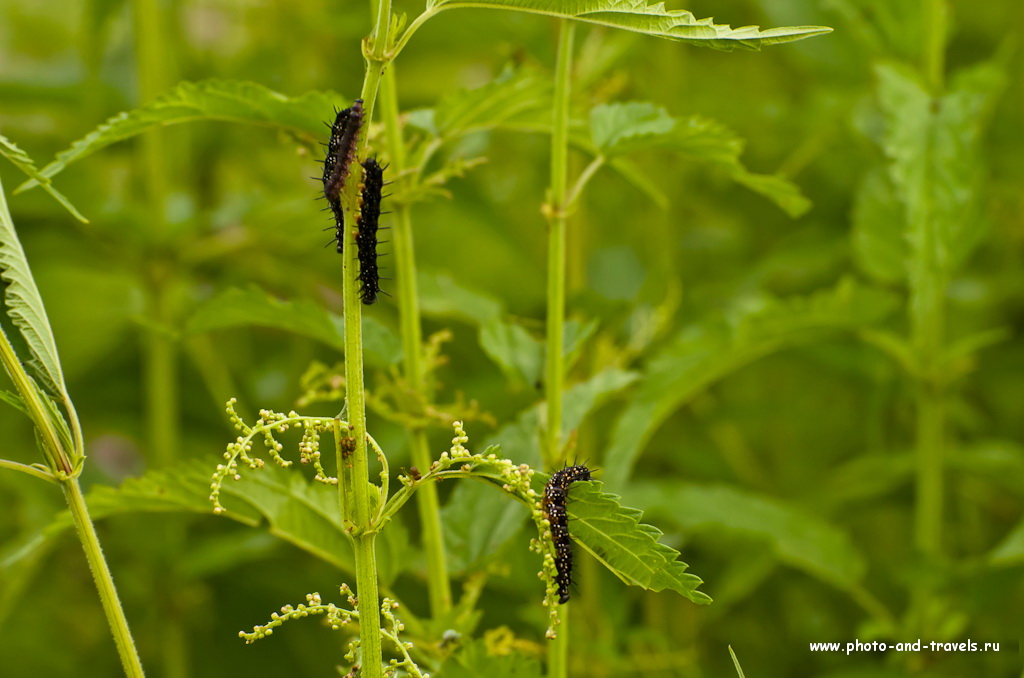
You see on the Nikkor AF-S VR 70-300 you can shoot almost macro? And what is the transfer of the depth of space !!!
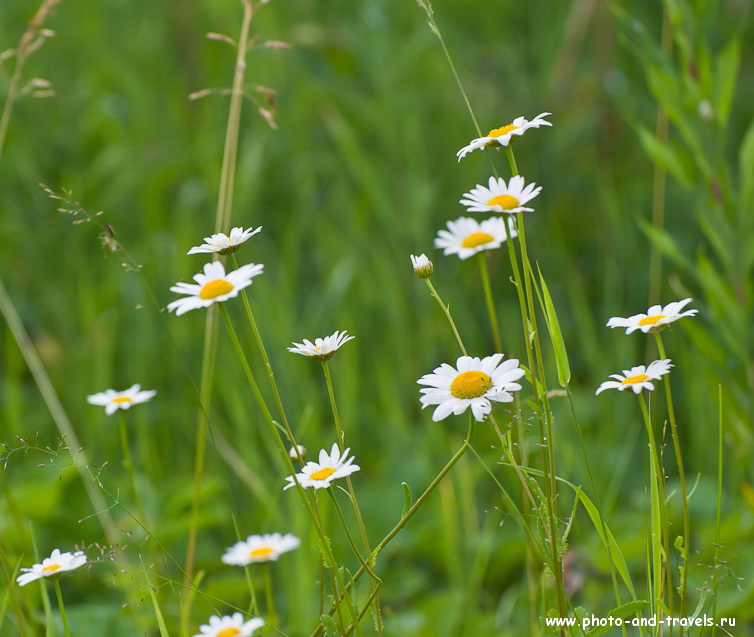
These three shots are all that I was able to shoot on my new Nikkor AF-S VR 70-300 lens on the first evening of the Nikon D5100 tests with the Nikkor AF-S VR 70-300 in the field.
Main conclusions: 1) Nikkor AF-S VR 70-300 mm f / 4.5-5.6G IF-ED lens on my D5100 produces an amazing picture. 2) does not fit into the frame; Why then did I buy it? 🙁 🙂 Later, I understood why I need this wonderful TV ...; 3) you need to buy a new tripod and a photo backpack (my shaky tripod for Nikkor 18-55mm f / 3.5-5.6G AF-S VR DX Zoom has such a big bandura as Nikkor 70-300 holds with great difficulty. And the backpack is needed, because I cannot do with a single telephoto lens and will have to use the standard whale for the time being. For example, when shooting a landscape I would need at least a standard 18-55 mm).
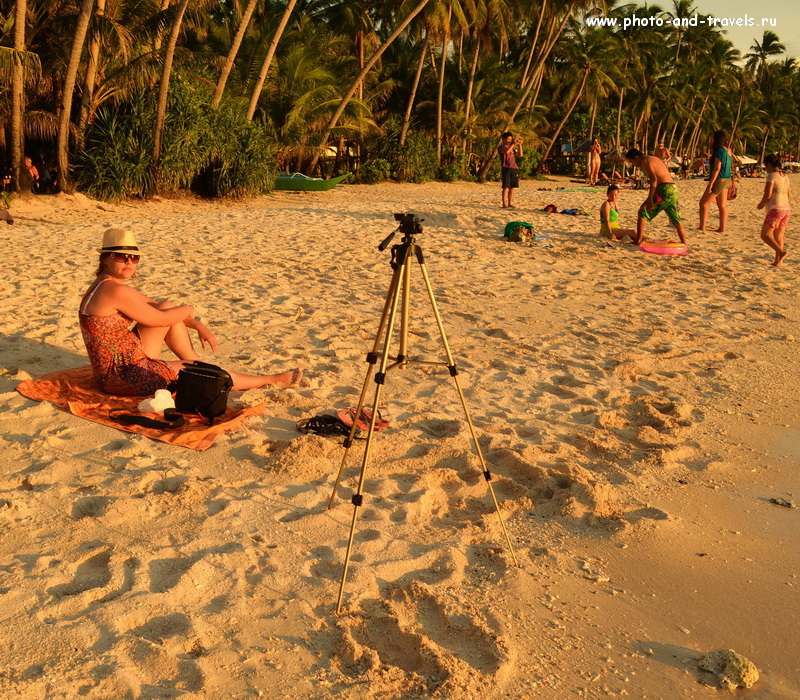
A week later, a friend of mine asked me to shoot him during a flight in an air tube.
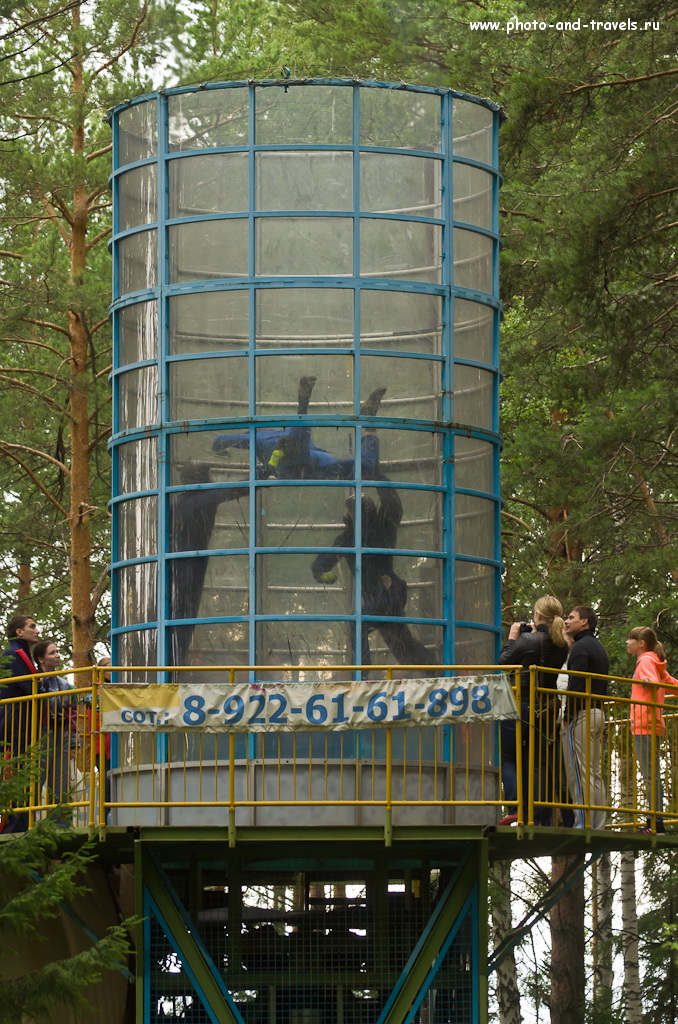
In order for the aerotube on these frames to fit into the frame on my Nikon D5100 Nikkor 70-300, I had to move a good 20-30 meters away from the subject. In my opinion, the telephoto lens with the Nikkor 70-300 in conjunction with the Nikon D5100 gives good results when used as a portrait:

The portrait “The wife of a novice photographer” was shot from a distance of almost 18 meters (cropped from the center of the frame). By the way, in this photo, my wife Catherine is holding a Nikon D5100 camera with a Nikon 17-55mm f / 2.8G ED-IF AF-S DX lens (this is a camera of my friend, which I told at the beginning of my Nikkor 70-300 telephoto lens review.
By the way, here are three portraits taken on a Nikkor 70-300 telephoto when I tested it before purchase. You can see how the lens blurs the background at different focal lengths.
2. Portrait with bokeh at a focal length of 195 mm. Shooting parameters: V = 1/250 sec, exposure compensation 0 eV; shooting mode "A"; f / 5.3; focal 195 mm; ISO 400.
3. How is it possible to blur the background in the portrait when shooting at maximum focal length? AF-S VR Zoom-Nikkor 70-300mm f / 4.5-5.6G IF-ED lens. Exposure time: 1/200 sec. "BUT". Aperture f / 5.6. FR-300 mm. ISO = 400
In the evening we went to the lake. Although it was windy and overcast, I wanted to shoot surfers.
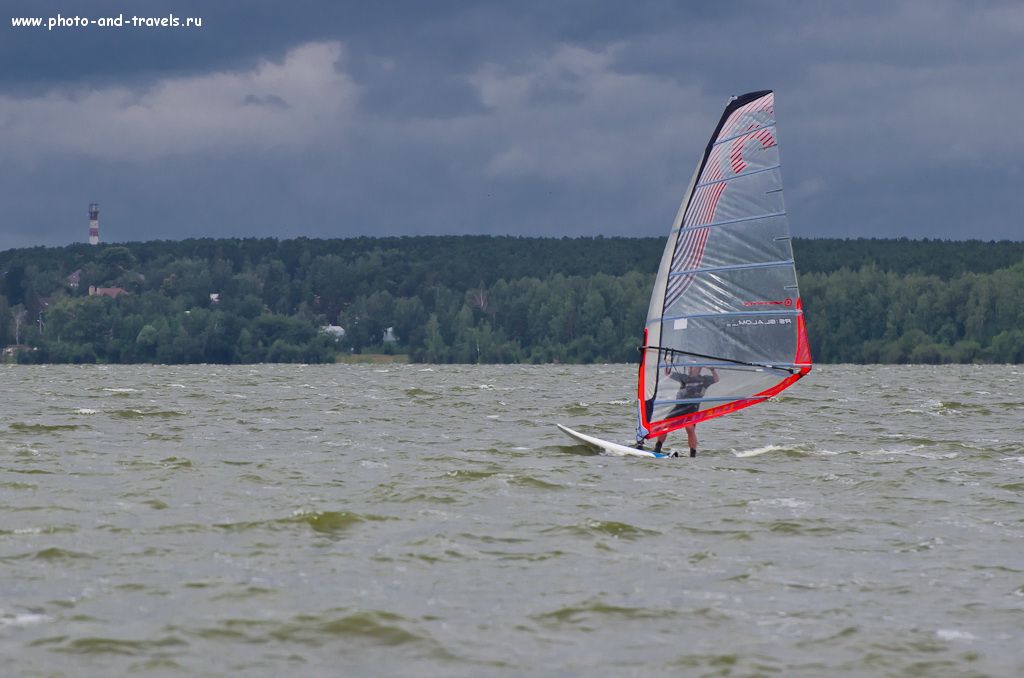
Pay attention to the feature of telephoto lenses to compress space. In this photo, the surf is located about 100 meters from the camera, and the coast in the background is about a couple of kilometers away. In the photo, it seems that the coast behind is very close.
In the same photos, it is clear that despite the fact that the ISO 1000 level, the picture quality is quite acceptable. As I said earlier, low noise is the positive side of the Nikon D5100 matrix installed from the big brother, the Nikon D7000.
In my test of the Nikkor AF-S VR 70-300 mm f / 4.5-5.6G IF-ED lens, I completely forgot to inform you that between shooting the tracks in the swamp on the first day and photographing the sailboats on the lake, I have there was another hike in the forest for the purpose of photohunting of birds. And that time I couldn’t get close to at least one bird at all and didn’t take anything off. Therefore, in the evening I had to recoup on the yard sparrows and pigeons.
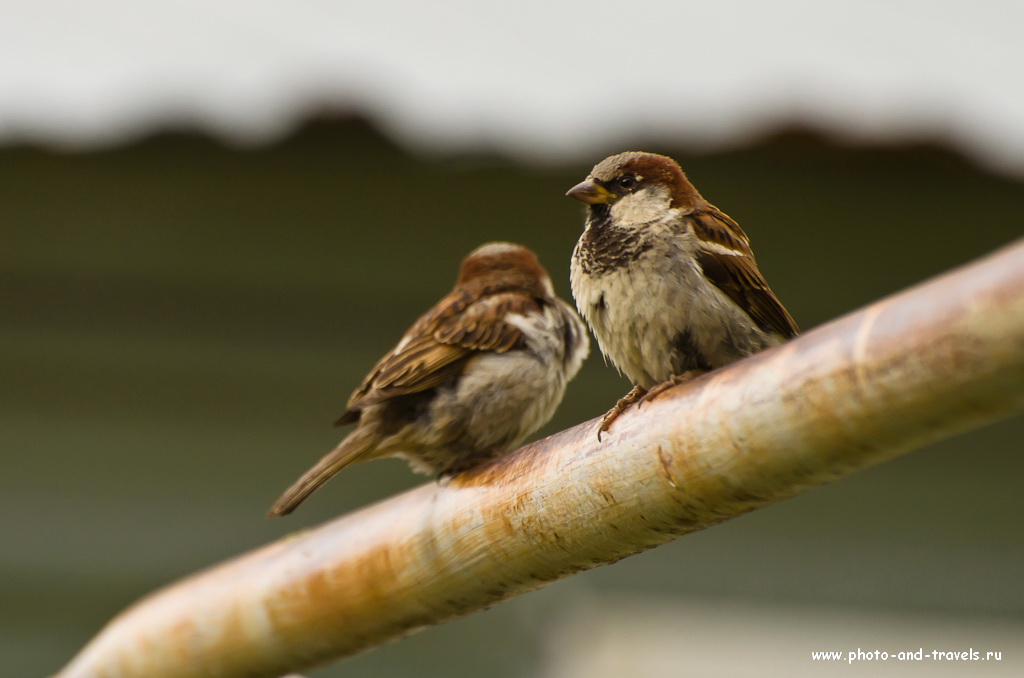
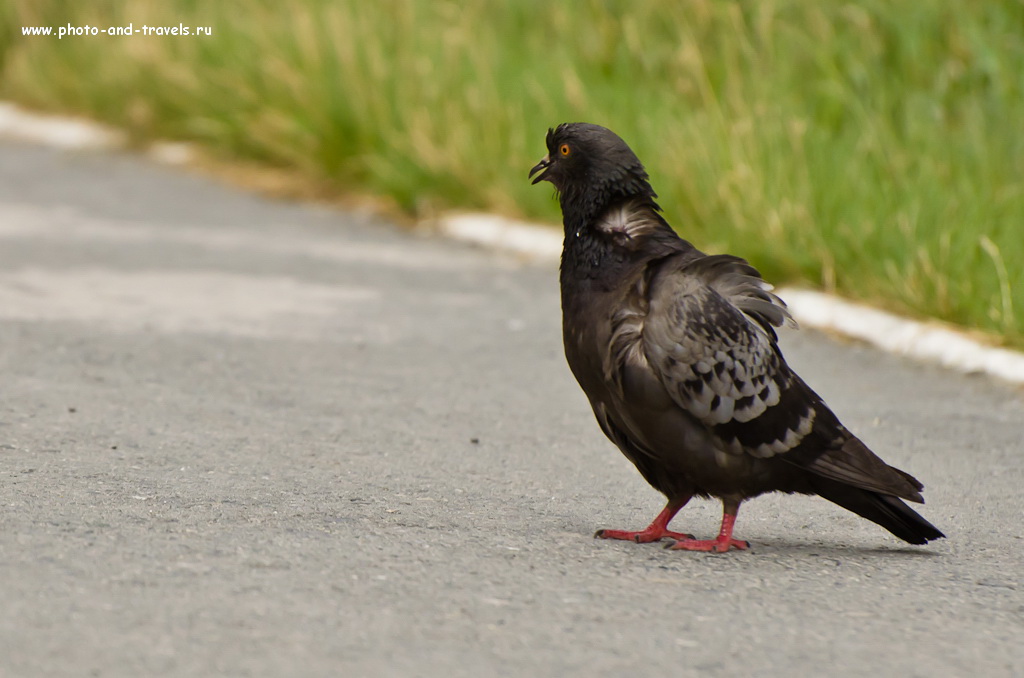
Well, here in this photo you can see which still lifes are obtained when shooting on the D5100 and a Nikkor 70-300 mm lens with natural light from the window.

And for comparison - still life shot on a Nikon D5100 with a 18-55 whale lens. The only thing is that this still life was shot with lighting from two large windows (somehow I will write an article about shooting this still life and setting the light), and the still life above is shot with lighting from a small window in the bath (I also plan to write an article on setting light when shooting still life with wildflowers).
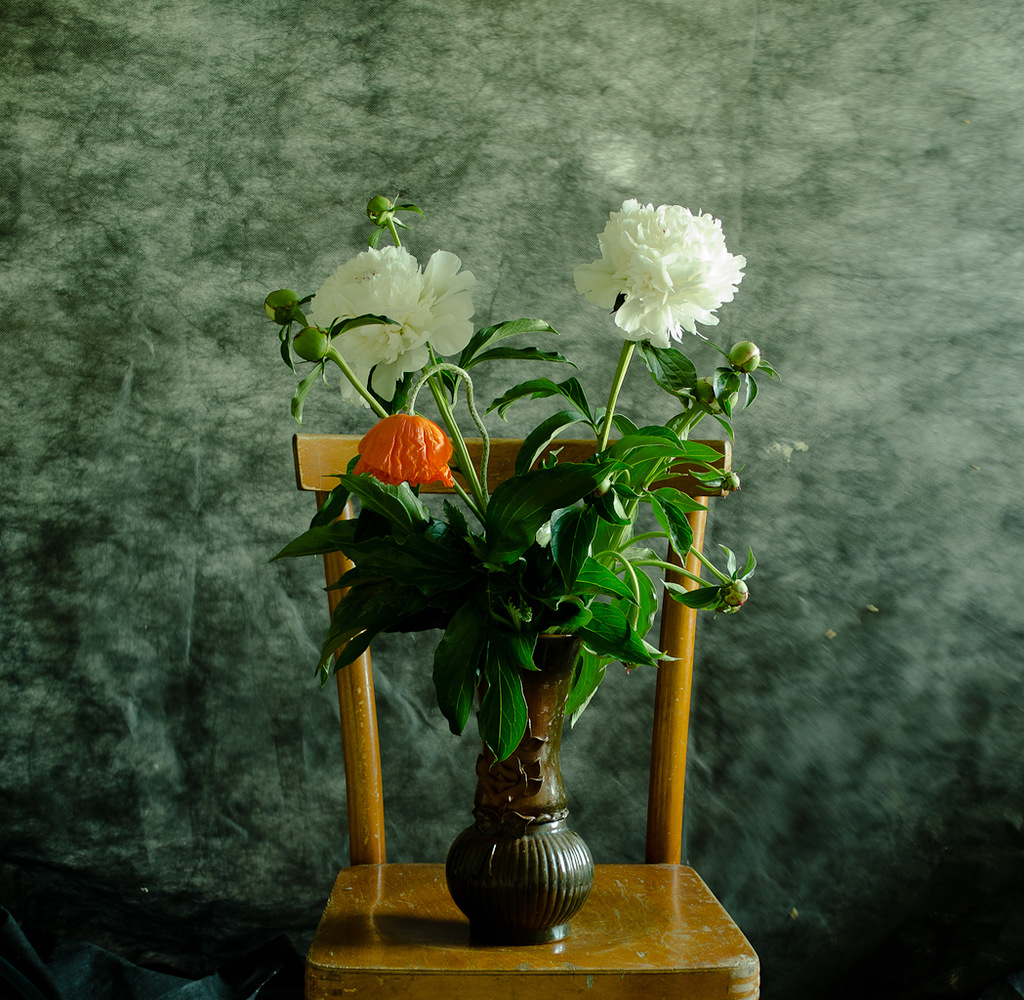
A week later I again got out into the forest, but the weather turned bad, the whole sky was overcast and only for a short time the sun looked out and arranged such a doomsday.

This photo is also clearly visible feature telephoto lenses to compress the distance. See how close clouds seem?
The presence of a telephoto in your park of lenses does not give you peace of mind: again and again you try to take a photo of the fun in your free time. On a sunny fine day, I climbed into the forest and, again, could not “shoot” a single bird. So good that even the bumblebees were not afraid of a beginner photo hunter! 🙂
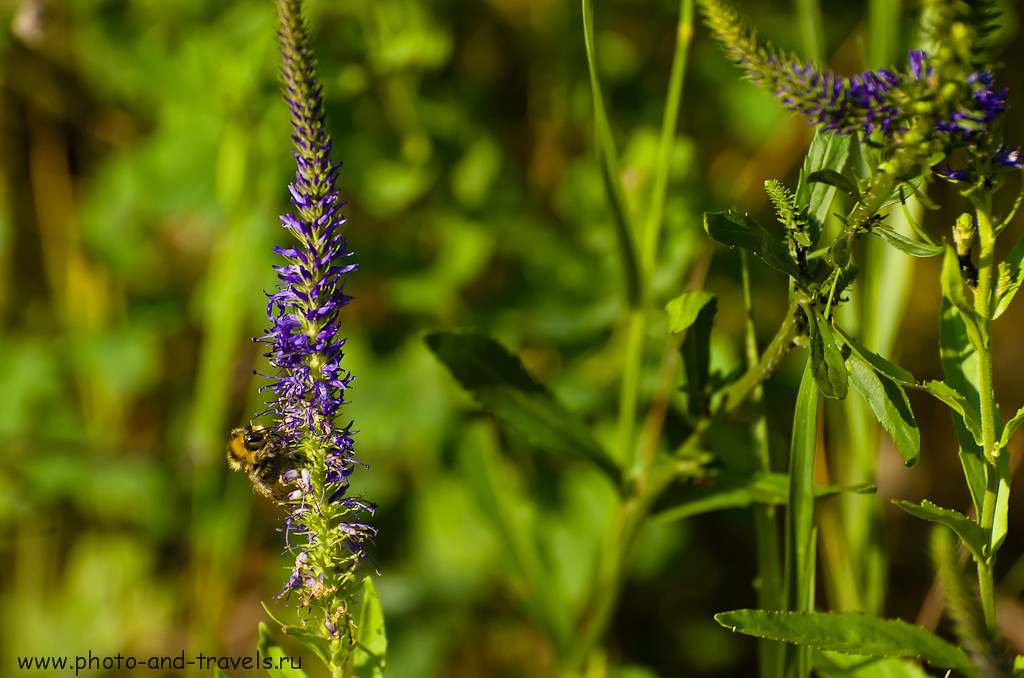
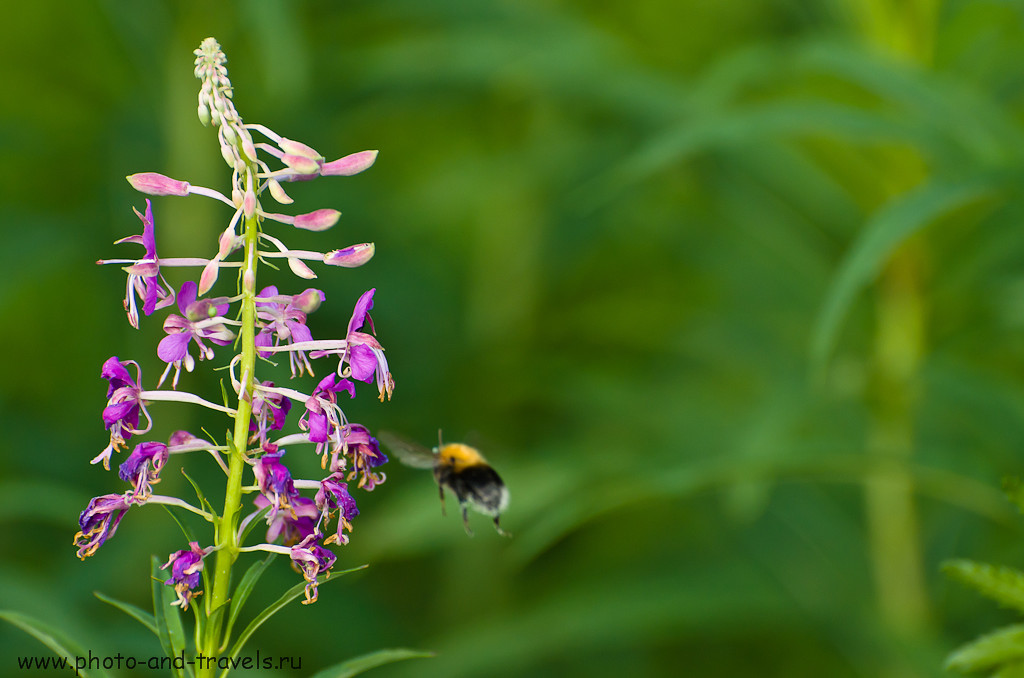
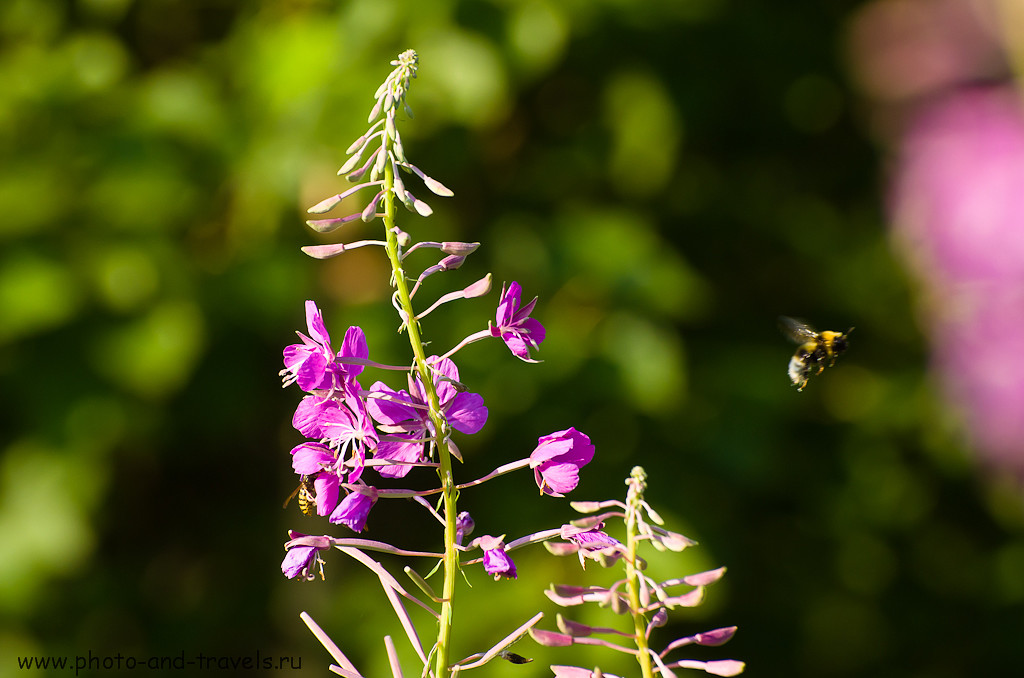
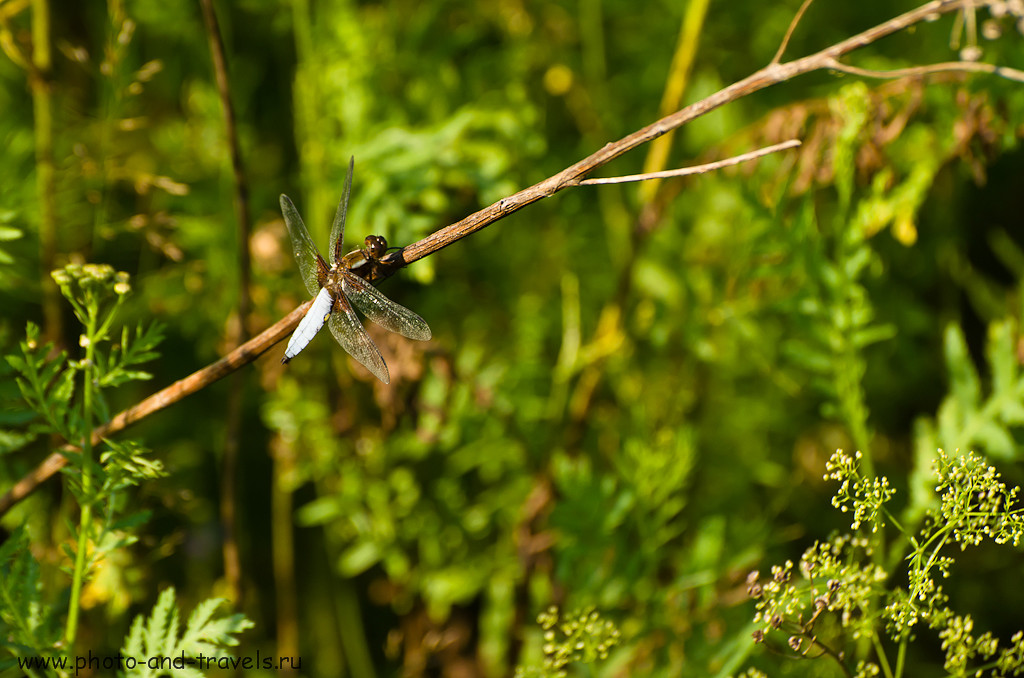
Note. In the photo section you can find an overview of the full-frame Nikon D800 SLR camera with examples of photos taken using different lenses. So, in the comments to her owner drew attention to the phenomenon of “focus breathing”: a decrease (sometimes significant) focal length when shooting at the minimum focusing distance (MDF).
It turns out that the focal length indicated on the lens body is the value that is measured when focusing at infinity, and the closer the subject is, the smaller it is (for some models). The most famous and flagrant case is the professional and expensive Nikon Nikkor 70-200 F / 2.8 VR II telephoto, which on MDF has only about 134 mm, instead of the stated 200 mm.
This is not to say that “focus breathing” is a deadly lens disease, but it has a certain impact on the result: we talked about negative consequences in the Nikon 70-200mm f / 4.0 telephoto lens review (see link at the end of this article) and compared it with a bright one. version. When shooting video and macro photography, the “focus breathing” effect is more noticeable - see the comments on the Nikon D800 review at the link above.
In particular, taking a picture of a dragonfly, as in the above picture, using the Nikon Nikkor 70-200 F / 2.8 VR II telephoto lens will not work, since with a real focal 134 mm from this distance it will be much smaller. The situation is similar with UltraZoom Nikon AF-S DX NIKKOR 18-300mm f / 3.5-6.3G ED VR or Nikon 18-300mm f / 3.5-5.6G ED AF-S VR DX ...

I think that, among other things, this review of the Nikkor AF-S VR 70-300 mm f / 4.5-5.6G IF-ED lens perfectly shows how important it is to get the right light in a photo. Here are five pictures taken in sunlight and I think that the result immediately catches the eye. But the photo in cloudy weather.
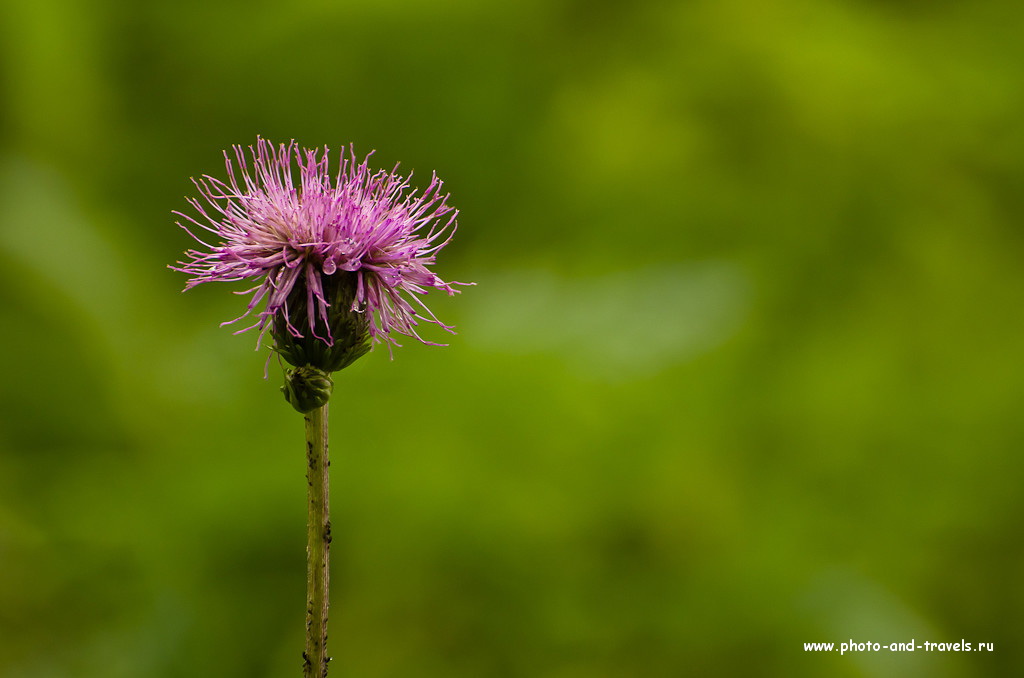
An example of a photograph taken on a Nikon 70-300 telephoto lens in cloudy weather. Camera - Nikon D5100
Agree that the difference in the quality of perception of the photo immediately striking? But an example of shooting a Nikkor 70-300 telephoto lens is already quite at dusk ...
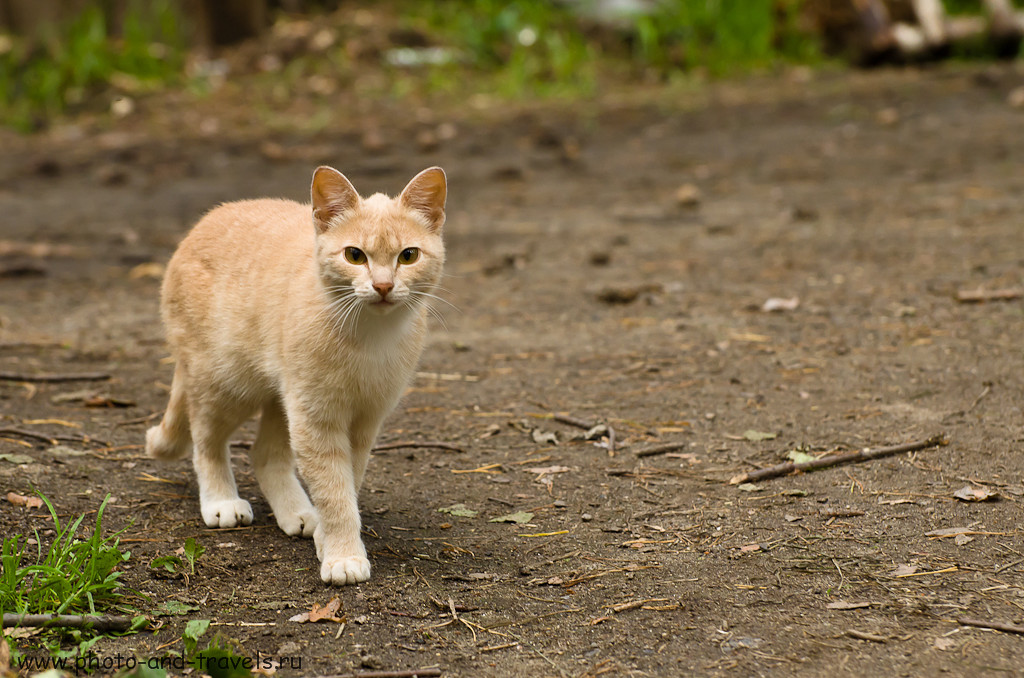
My opinion about the quality of photographs of a pair of Nikon D5100 and Nikkor AF-S VR 70-300 mm f / 4.5-5.6G IF-ED lens
Well, you read my review about the quality of photos taken from a pair of Nikon D5100 camera with a cropped camera and a Nikkor AF-S VR telephoto lens of 70-300 mm f / 4.5-5.6G IF-ED and you probably want to know my opinion? Having used this remarkable lens for a month now I can say the following:
- The quality of the picture, which gives Nikkor 70-300 on the carcass Nikon D5100. Look at my photos taken until today - they are all taken on a standard Nikkor 18-55 lens. I think that there will be no disputes - my new TV gives a picture a head taller than a whale. And now I know for sure that at the first opportunity I will change the standard 18-55 to a better lens. It seems to me that today's Nikon telephoto lens test proved the postulate that a cheap bird with expensive glass will show excellent results (I think the pictures will be better than on an expensive camera with a cheap lens). Those. A beginner amateur photographer should focus on the following combination: a cheap body + high-quality lens (if the budget is limited).
- I hope that you, like me, caught my eye that the photos at focal lengths other than China 18-55 look more interesting.
- At the beginning of my report, I mentioned that the lens was quite cheap (7,000 rubles from a second-hand dealer), because there is a lot of dust inside it. Seasoned photographers claim that dust has almost no effect on picture quality. Of course, I didn’t have to shoot a new Nikkor AF-S VR 70-300 mm f / 4.5-5.6G IF-ED telephoto lens, but today my dusty old man is quite comfortable with me. Effects of dust, I have not noticed.
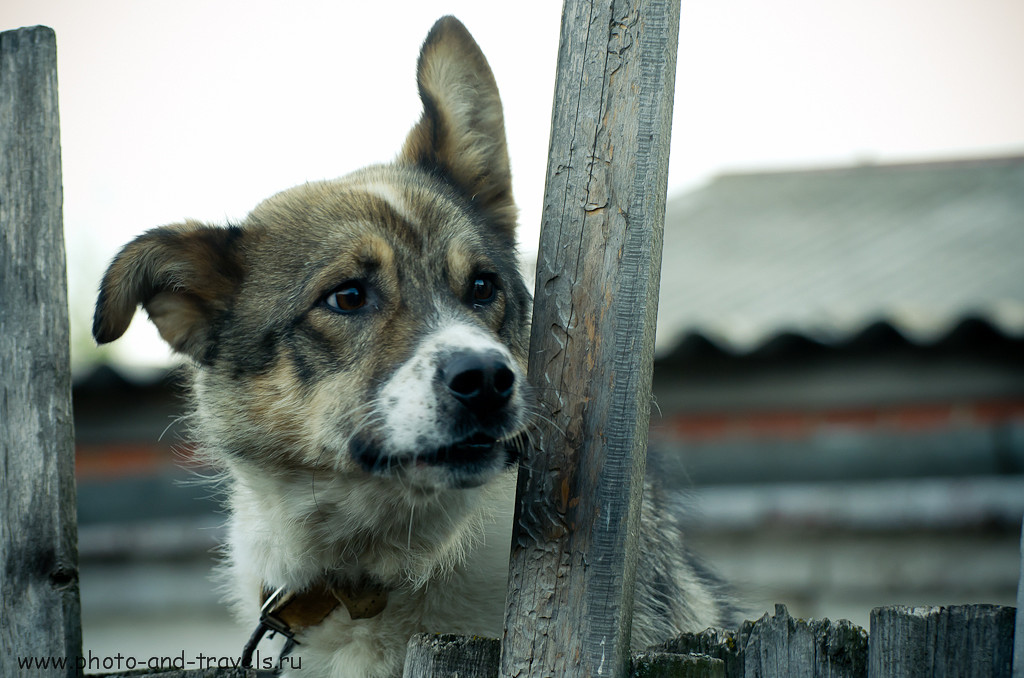
Where is the dust? 🙂
4. Like many other owners of this telephoto lens, I believe that its stabilizer works very well. You have seen that many of the photos in this Nikkor AF-S VR 70-300 mm f / 4.5-5.6G IF-ED lens survey in conjunction with the Nikon D5100 were taken in cloudy and evening hours with your hands. And the quality of the photos is quite acceptable.
In conclusion, I want to say that since now I don’t want to shoot at all on a whale 18-55mm, my ideal lens set for all occasions for a crop looks like this:
- Nikon 17-55 / 2.8 - on vacation and for every day;
- Tokina AT-X 124 PRO DX II Nikon F - landscapes;
- Nikkor AF-S VR 70-300 mm f / 4.5-5.6G IF-ED - photo hunting, shooting on safari.
Just imagine what pictures I could bring from my self-drive safari to Yala National Park in Sri Lanka or from a trip to Celestun National Park in Mexico, if at that time I had this one of the best budget telephoto lenses Nikkor 70-300 ? !!!
- Fixes 35 / 1.8 G and 50 / 1.8 G - shooting portraits;
Update October 19, 2013
P.S. I'll post another example of shooting a concert on a Nikkor 70-300 TV. Of course, it is dark for these purposes. Aperture reporter 17-55 / 2.8 copes better. But, if you're lucky with the light, you can get a good result (photo taken in March 2014 at the show during the Elephant Show at Nong Nooch Park (Nong Nooch) in Pattaya in Thailand, where we flew on our own from China).
Example of shooting a concert on a Nikon D5100. AF-S VR Zoom-Nikkor 70-300mm f / 4.5-5.6G IF-ED lens. Exposure 1/125 sec. Aperture 4.5. Focal length 80 mm. Sensitivity (ISO) 1600. Flash - did not work.
And yet - crocodiles in the zoo of the Nong Nooch Park in Pattaya.

All about photo
Rheumatoid nodes in the legs
Carcinoid syndrome. E34.0 Carcinoid Syndrome Treatment of Carcinoid Syndrome
Proteinuria: Definition and Classification
Cerebellar inflammation symptoms treatment Cerebellar diseases symptoms treatment